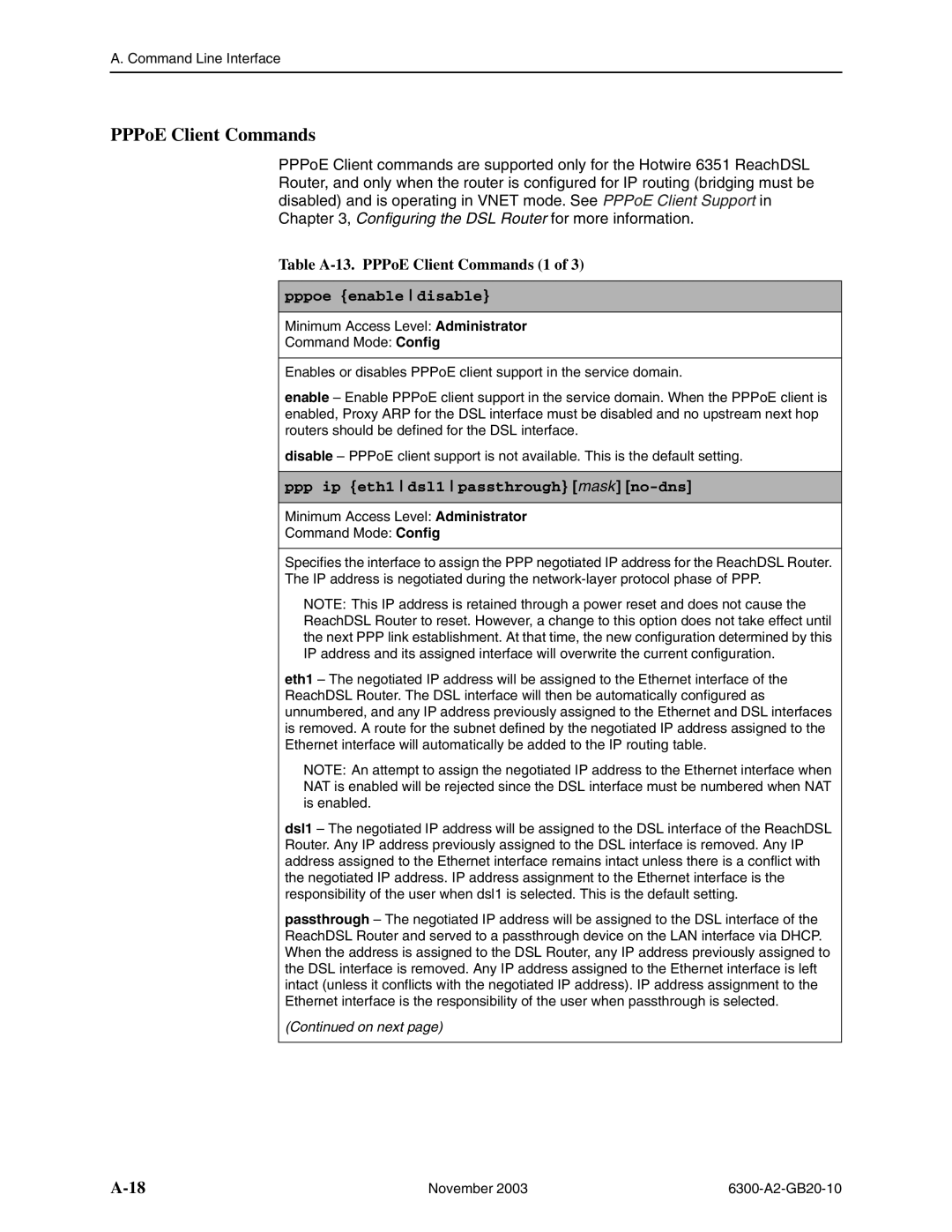
A. Command Line Interface
PPPoE Client Commands
PPPoE Client commands are supported only for the Hotwire 6351 ReachDSL Router, and only when the router is configured for IP routing (bridging must be disabled) and is operating in VNET mode. See PPPoE Client Support in Chapter 3, Configuring the DSL Router for more information.
Table A-13. PPPoE Client Commands (1 of 3)
pppoe {enable disable}
Minimum Access Level: Administrator
Command Mode: Config
Enables or disables PPPoE client support in the service domain.
enable – Enable PPPoE client support in the service domain. When the PPPoE client is enabled, Proxy ARP for the DSL interface must be disabled and no upstream next hop routers should be defined for the DSL interface.
disable – PPPoE client support is not available. This is the default setting.
ppp ip {eth1 dsl1 passthrough} [mask] [no-dns]
Minimum Access Level: Administrator
Command Mode: Config
Specifies the interface to assign the PPP negotiated IP address for the ReachDSL Router. The IP address is negotiated during the
NOTE: This IP address is retained through a power reset and does not cause the ReachDSL Router to reset. However, a change to this option does not take effect until the next PPP link establishment. At that time, the new configuration determined by this IP address and its assigned interface will overwrite the current configuration.
eth1 – The negotiated IP address will be assigned to the Ethernet interface of the ReachDSL Router. The DSL interface will then be automatically configured as unnumbered, and any IP address previously assigned to the Ethernet and DSL interfaces is removed. A route for the subnet defined by the negotiated IP address assigned to the Ethernet interface will automatically be added to the IP routing table.
NOTE: An attempt to assign the negotiated IP address to the Ethernet interface when NAT is enabled will be rejected since the DSL interface must be numbered when NAT is enabled.
dsl1 – The negotiated IP address will be assigned to the DSL interface of the ReachDSL Router. Any IP address previously assigned to the DSL interface is removed. Any IP address assigned to the Ethernet interface remains intact unless there is a conflict with the negotiated IP address. IP address assignment to the Ethernet interface is the responsibility of the user when dsl1 is selected. This is the default setting.
passthrough – The negotiated IP address will be assigned to the DSL interface of the ReachDSL Router and served to a passthrough device on the LAN interface via DHCP. When the address is assigned to the DSL Router, any IP address previously assigned to the DSL interface is removed. Any IP address assigned to the Ethernet interface is left intact (unless it conflicts with the negotiated IP address). IP address assignment to the Ethernet interface is the responsibility of the user when passthrough is selected.
(Continued on next page)
November 2003 |
